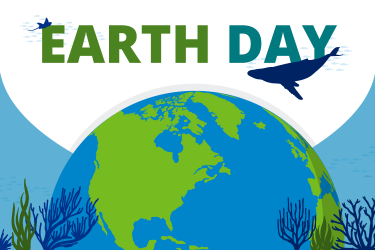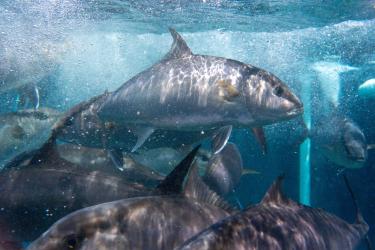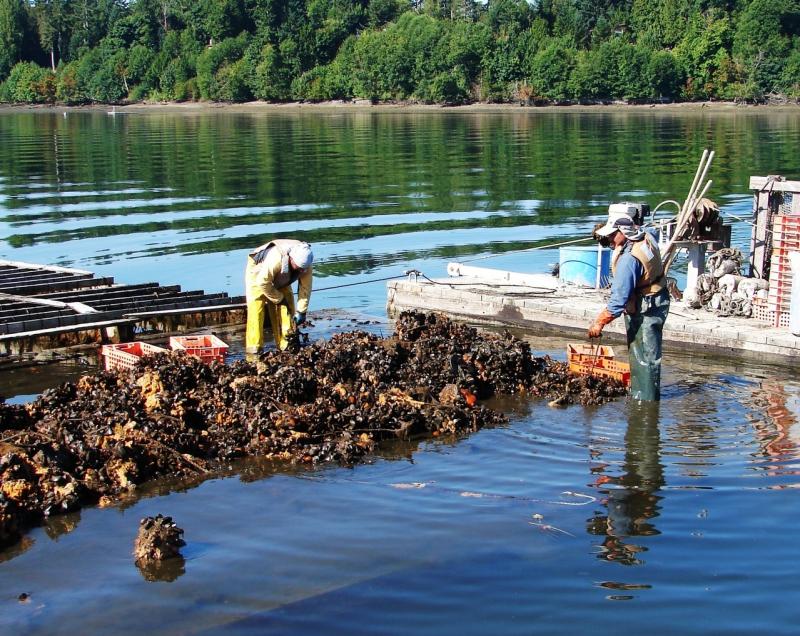NOAA’s regional fisheries science centers—working closely with industry, non-government organizations, and academia—have made fundamental, positive contributions to the understanding of aquaculture for decades. This is just one of the findings of a new peer panel report on the state of NOAA’s aquaculture science. Held in 2016–2017, the review was the first-ever external nationwide examination of NOAA’s aquaculture science and research programs. The resulting report highlighted the high quality of research conducted by agency experts for many years, along with gaps and challenges facing the increasingly important aquaculture program.
“NOAA recognizes that marine aquaculture is vital for supporting our nation’s seafood production, year-round jobs, rebuilding protected species and habitats, and enhancing coastal resilience,” said Mike Rust, Science Advisor for the Office of Aquaculture. “NOAA science centers are using cutting-edge research to foster these benefits while also conducting a wide array of research to further industry sustainability and ocean stewardship.”
With a growing demand for aquaculture research to inform coastal managers, aquaculture farmers, and policy-makers, it is increasingly important to align research and resources with stakeholder needs. For this reason, NOAA launched this first-ever external science review for aquaculture research.
Aquaculture Research was Focus
The in-depth review examined aquaculture research at six NOAA Fisheries science centers and one National Ocean Service science center. Combined, these centers research a variety of topics including nutrition and sustainable fish feeds, marine spatial planning, and even the ecosystem benefits of oyster farming. To ensure that such a large science portfolio maintains quality research focused on key industry and regulatory science needs, NOAA’s Aquaculture Program invited peer review by external aquaculture experts from diverse fields including industry, academia, and federal agencies. “An external peer review panel provides benefits to both the science centers and the end users of the research,” added Rust. “This review process allows the centers to maintain a high level of aquaculture scientific quality with input from experts outside of the organization while also allowing stakeholders to provide guidance for future science investments.”
During the review process, the science centers and laboratories provided briefing materials and background documents to facilitate an independent review of research. The in-person reviews were conducted at two locations, one for the eastern half of the country in Milford, Connecticut, and one for the western half in Seattle. Each in-person review was conducted over a 4-day period, during which NOAA aquaculture researchers joined the panel of experts to present and discuss their research. “We were pleased to have the opportunity to share our leading-edge research and analyses with the peer review panel,” said James Morris, marine ecologist for the National Centers for Coastal Ocean Science. “Our research creates the foundation for aquaculture management. Learning how to better align our efforts to meet industry and community needs is vital to achieving our mission.”
At the end of the review process, each panelist produced an individual report detailing their observations and recommendations for the agency’s aquaculture research. The panel chair summarized the program review proceedings for submission to NOAA Fisheries. In all, the review panel was impressed with the quality and results of the science produced, given the limited resources and infrastructure available to support aquaculture at the science centers.
Productive Aquaculture Research Partnerships Highlighted
Reviewers specifically noted the productive aquaculture research programs at the National Ocean Service and the Northeast and Northwest Fisheries Science Centers, but also noted that other centers conducted little to no aquaculture research. The panel also expressed the need for more than just aquaculture biology and ecology research and noted a lack of economic and social research, which is needed to develop marine aquaculture in the United States. The panel’s recommendations addressed current research gaps, and included comments on future gaps in growth areas like seaweed and macroalgae.
As marine aquaculture continues to expand around the nation, NOAA science centers will play an increasing role in the research that informs policy and best management practices. Using the information from this review, NOAA’s Aquaculture Program can better align research priorities with agency strengths and industry needs in addressing sustainable aquaculture. NOAA’s Aquaculture Program will also use the findings and recommendation from the peer review to develop a Strategic Aquaculture Science Plan. The plan will aim to foster greater collaboration among science centers, academia, extension, industry, regulators, and other stakeholders to increase the effectiveness and efficiency of aquaculture research around the nation.
Read the full Review of NOAA's Aquaculture Science Program




